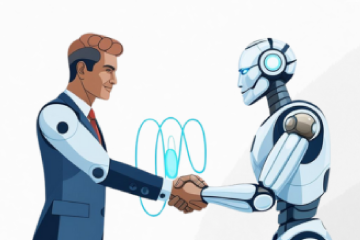Charting out your CX Excellence with a CX Maturity Roadmap: Part 2
Charting out your CX Excellence with a CX Maturity Roadmap: Part 2

Customer experience, or delivering value to your customer doesn’t just happen. It requires certain pillars to be in alignment within an organization to be successful and ultimately derive value for you.
Although you may have a task force to focus specifically on CX-related initiatives, it is a company-wide commitment.
This means that right from the CEO to the frontline employee, everyone should be working towards achieving CX excellence.
In Part 1 of our maturity roadmap, we discussed 5 pillars that can impact your CX maturity levels. These were leadership, culture and values, strategy and planning, alignment, and performance measurement.
In this article, we will discuss the next set of 5 pillars that impact CX maturity levels. Understanding the interplay between these pillars can help you chart your own CX growth and sustainable story.
#6 Technology adoption
[advancing from no formal mechanism to capture customer feedback to immediate capture and action upon feedback]

Even though organizations understand that data is important, a lot of them still collect feedback once a year. Can you imagine the lag that exists between a customer having a bad experience and then being asked about it? And once the feedback has been received, to find a solution and implement it? At this time, you have already lost your customer.
While deploying processes to measure customer experience is important, a lack of accountability for those scores and who is in charge of coming up with corrective measures can deem them meaningless.
Building CX into the KPIs of employees can ensure that a formal structure exists to manage detractors and celebrate promoters.
#7 Performance management
[moving from no accountability to having CX as a board-level discussion]

If you look at pillars 1 [leadership] and 2 [culture and value] what performance management really means is how seriously does the top management view CX. Do they make decisions based on evidence garnered from CX reports?
For example, if the Chairman of an insurance company is obsessed with the rate of claim denials – the worst thing they could do for their customers is to ensure that the rate remains less.
#8 CX orientation
[moving from ad hoc CX processes to employees being trained and empowered in them]
What is the service mindset of your employees? When they approach the customer, is it done rationally or with empathy? Here’s a table that can help you understand how CX and your approach to it impact your service.
As the graph explains, the best place for you to be in is when there is empathy but there is also a process.
It means that the employees, especially the customer-facing ones, are empowered with certain procedures, directives, etc. on how to handle an irate customer or to offer a customer what is needed if it is in their authority.
So for example, if something goes wrong in Branch 1 and Branch 2, the empathy with which the problem is resolved will vary since that’s a human element. But is there a procedure that both of them can follow to provide resolution?
#9 Impact assessment
[building linkages between your Net Promoter Score NPS and revenue growth]
In our CX Maturity Assessment test, from the respondents, only 21% knew the impact that a higher NPS had on revenue or cost. So you should be in the position with an increase in your NPS reflects in the growth of your revenue.
This can be tricky to establish because you may swing to one extreme where you’re giving everything to the customer but not focussing on how it impacts your revenue/cost or vice-versa.
For example, Eureka Forbes has defined clear goals to measure their CX impact. If repeat calls to the call centers are reducing, it would impact their bottom-line cost.
#10 Sustainability
[moving from lack of structure to strategic thinking with CX being embedded in the culture of the organization]

This is the most important pillar which asks the question: is your CX journey a self-sustaining journey? If key people leave, can your CX program sustain itself?
From our assessment results, 28% felt that the journey would lose steam overnight and 34% felt that it could sustain.
One of the ways to ensure the sustainability of the program is to check that CX wins are recognized within the organization and that new employees are trained on it.
If you have taken care of all the nine pillars, then you have worked on creating a self-sustaining CX program.
Thank you to Rajdeep Charan – Sr. GM CRM & Customer Experience, Eureka Forbes, and Birender Ahluwalia – CEO, The Positivity Company for sharing their expertise on the CX Masterclass hosted by LitmusWorld.
If you’re looking for more information, all resources from the Masterclass are here.

